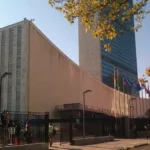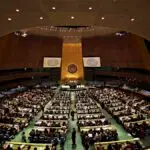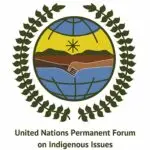UN Declaration on the Rights of Indigenous Peoples
Implications for the Chamorro People
The Chamorro people continue to struggle for self-determination. Chamorros of Guam have been colonized since about 1695 by Spain, the United States, Japan and the United States again after World War II. The Chamorro people of the Northern Marianas have had a similar struggle being colonized by Spain, Germany, Japan and the United States during the same time period.
The United Nations Declaration on the Rights of Indigenous Peoples, adopted by the United Nations General Assembly during its 62nd session at UN Headquarters New York City on 13 September 2007, may be a useful tool to move forward in this ongoing debate. US President Barrack Obama agreed to sign on to the declaration in December 2010.
The declaration is a dynamic development of international law, reflecting a commitment of the UN’s member states to adhere to a particular standard for the treatment of indigenous peoples. It is expected to serve as a significant tool towards eliminating human rights violations against the 370 million indigenous people, Chamorros among them, and assisting in combating discrimination and marginalization.
The declaration is seen by some as an opportunity to inject a critical alternate course of discussion into the legal and public record about who the Chamorro people were, are, and can still be.
For further reading
Aguon, Julian. “Other Arms: The Power of a Dual Rights Legal Strategy for the Chamoru People of Guam Using the Declaration on the Rights of Indigenous Peoples in U.S. Courts.” University of Hawai’i Law Review 31, (2009): 113-154.
United Nations. “Permanent Forum.” United Nations For Indigenous Peoples, last modified 9 February 2022.
––– “United Nations Declaration on the Rights of Indigenous Peoples.” United Nations For Indigenous Peoples, last modified 12 September 2020.



